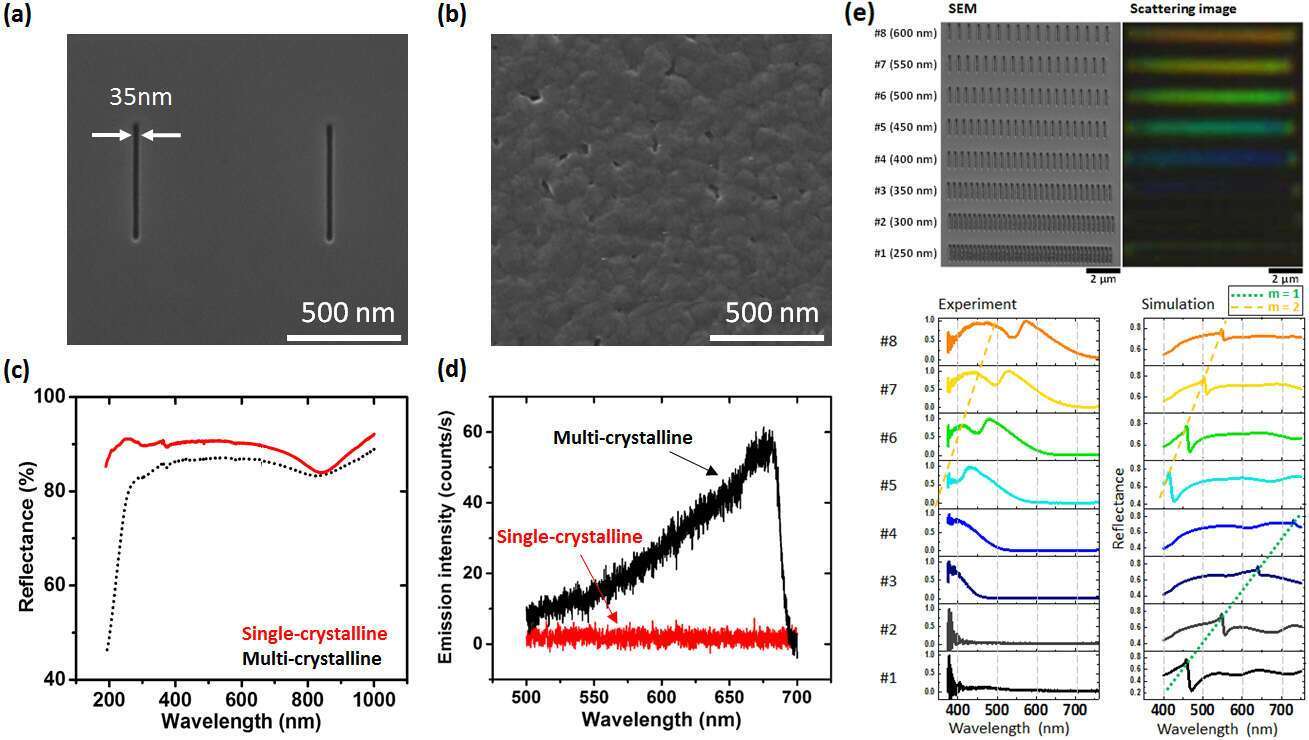
Single-Crystalline Aluminum Nanostructures on Semiconducting GaAs Substrate for Ultraviolet to Near-Infrared Plasmonics
Aluminum, as a metallic material for plasmonics, is of great interest because it extends the applications of surface plasmon resonance into the ultraviolet (UV) region and excels noble metals in the natural abundance, cost and compatibility with modern semiconductor fabrication process. Ultrasmooth single-crystalline metallic films are beneficial for the fabrication of high-definition plasmonic nanostructures, especially complex integrated nanocircuits. The absence of surface corrugation and crystal boundaries also guarantees superior optical properties and the applications in nanolasers. Here, we present UV to near-infrared (NIR) plasmonic resonance of single-crystalline aluminum nanoslits and nanoholes. The high-definition nanostructures are fabricated with focused ion-beam (FIB) milling into an ultrasmooth single-crystalline aluminum film grown on a semiconducting GaAs substrate with molecular beam epitaxy (MBE) method. As shown in the Fig. 1 below, the single-crystalline aluminum film shows ultrasmooth surface (Fig.1a and 1b), improved reflectivity (Fig. 1c) and reduced two-photon photoluminescence (TPPL, Fig. 1d) due to the ultrasmooth surface. The nanoslit arrays show clear Fano-like resonance (Fig. 1e) and the nanoholes are found to support both photonic modes and localized surface plasmonic resonance. We also found that TPPL generation is more efficient when the excitation polarization is parallel rather than perpendicular to the edge of the aluminum film. Such counter-intuitive phenomenon is attributed to the high refractive index of the GaAs substrate. We show that the polarization of TPPL from aluminum well preserves the excitation polarization and is independent of the crystal orientation of the film or substrate. Our study gains insight into the optical property of aluminum nanostructures on high-index semiconducting GaAs substrate and illustrates a practical route to implement plasmonic devices onto semiconductors for future hybrid nanodevices.

Figure 1. SEM image of the single-crystalline (a) and multi-crystalline aluminum film (b). Scale bar: 500 nm. Reflectance (c) and TPPL (d) of the single-crystalline (red solid line) and multi-crystalline (black dotted line) aluminum film arecompared. (e) Top: SEM and scattering images of periodic nanoslits arrays numbered as #1 to #8 with periodicity ranging from 250 to 600 nm. Bottom: Scattering spectra (left) and the simulated reflectance spectra (right), showing the fundamental mode (m = 1, green dotted line) and the first higher-order mode (m = 2, orange dashed line).
jshuang@mx.nthu.edu.tw
Powered by Eventact EMS